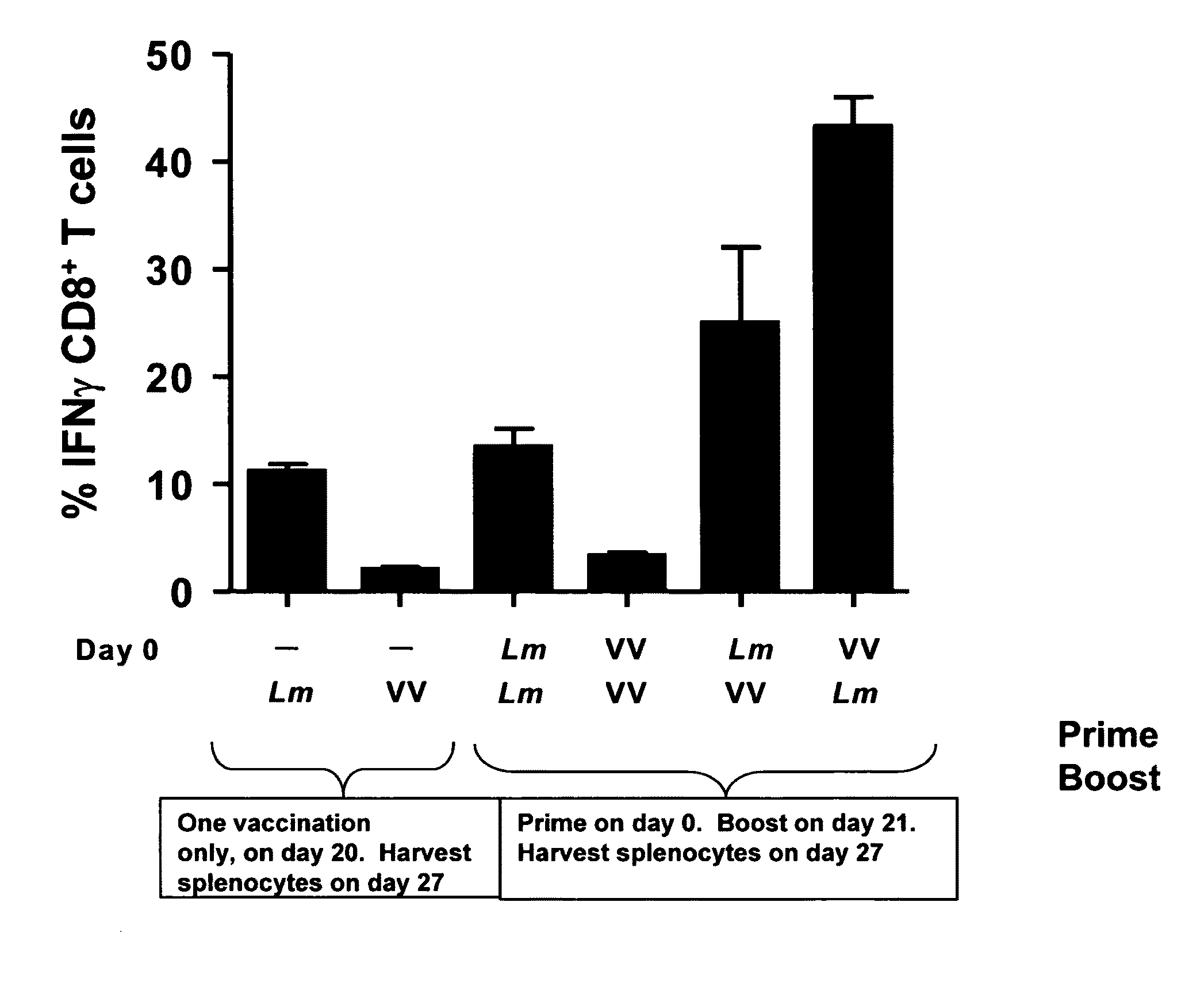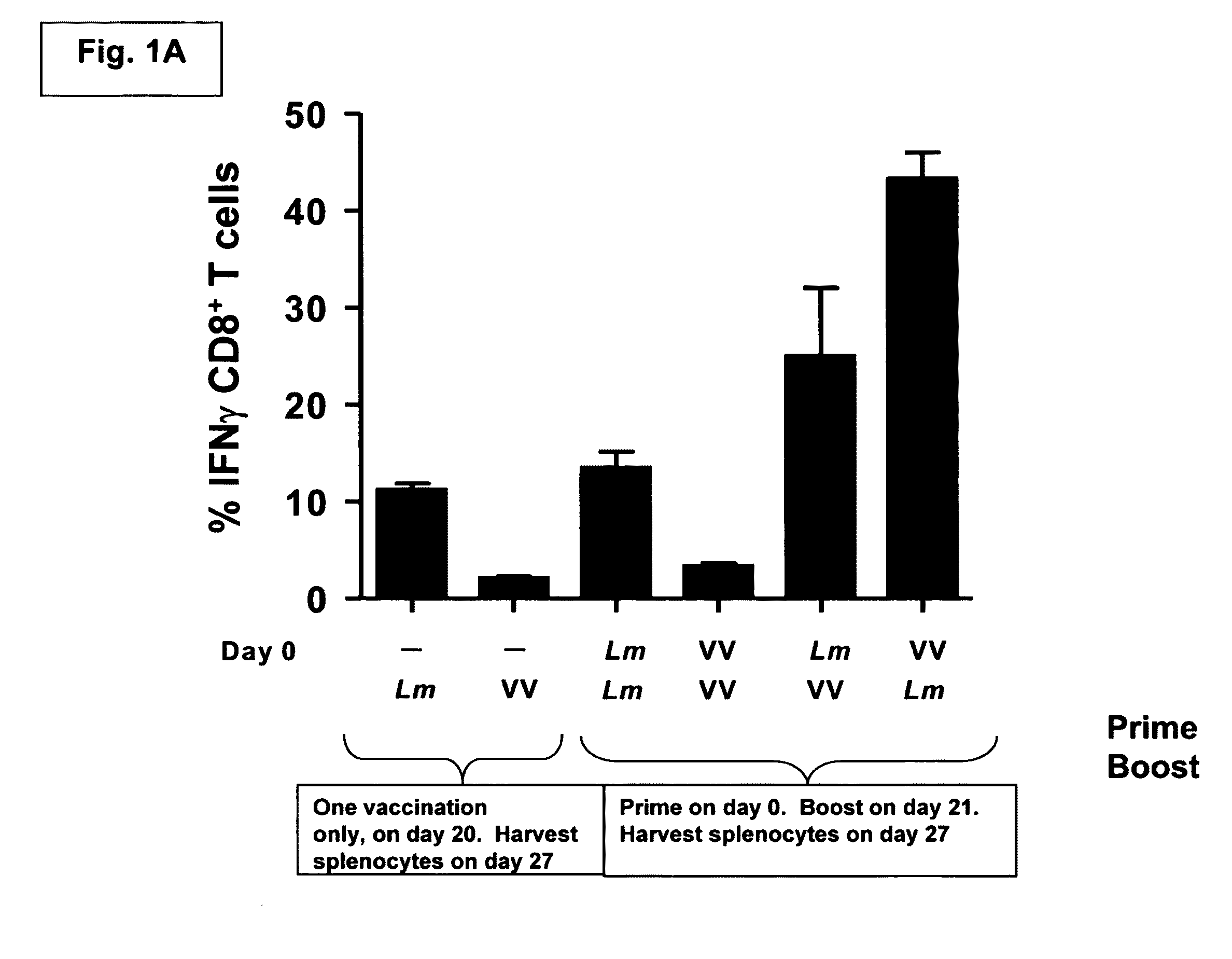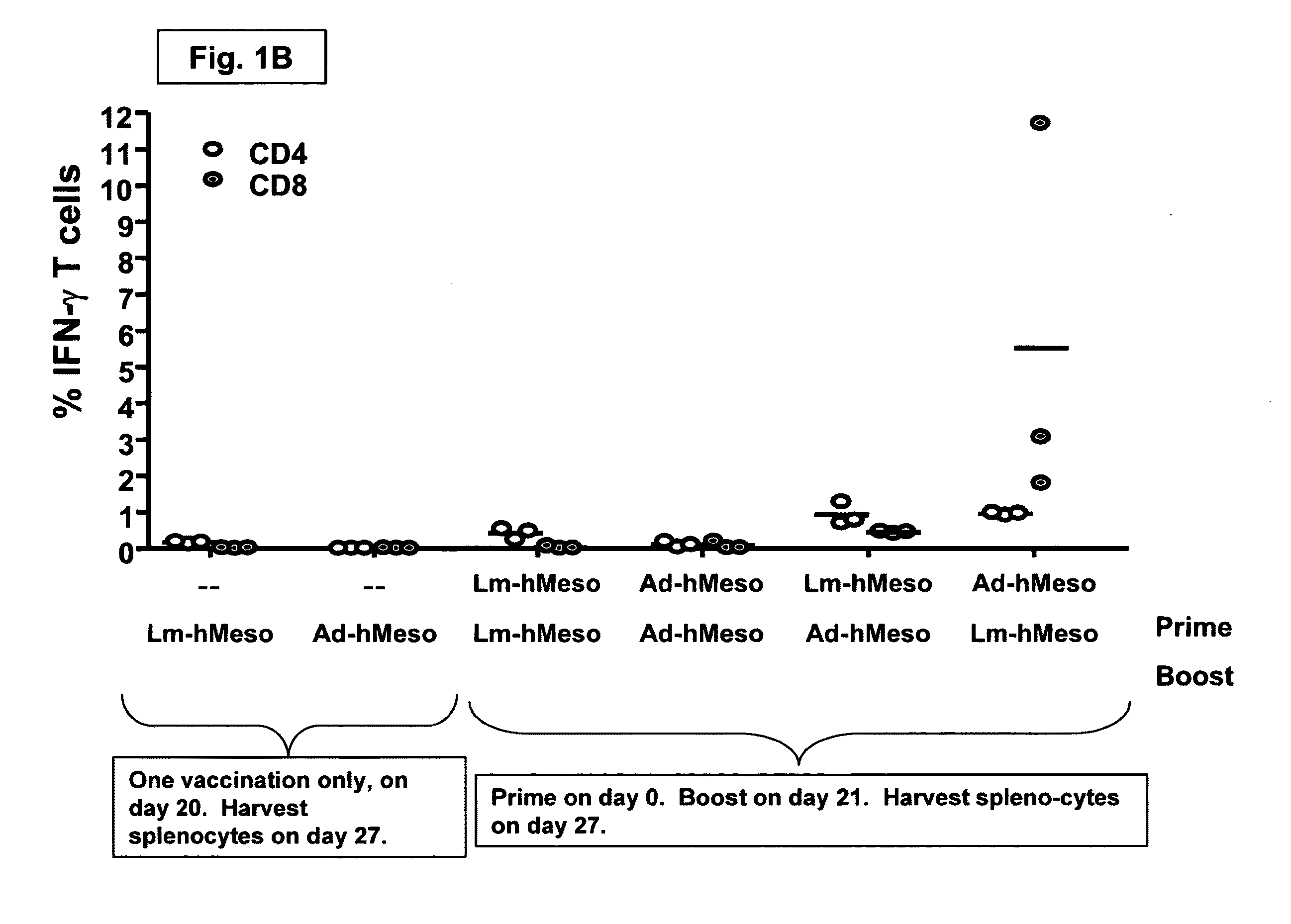Methods and compositions using listeria for enhancing immunogenicity by prime boost
a technology of immunogenicity and composition, applied in the field of methods and compositions using listeria for enhancing immunogenicity by prime boost, can solve the problems of ineffective methods for preventing and treating cancerous disorders, and relatively inefficient approaches to boosting cellular immunity, so as to achieve the effect of lowering the burden of tumors
- Summary
- Abstract
- Description
- Claims
- Application Information
AI Technical Summary
Benefits of technology
Problems solved by technology
Method used
Image
Examples
example 1
[0114]C57BL / 6 mice (3 per group) were immunized on day 0 with either 1×106 pfu of vaccinia virus (“VV”) encoding OVA or with 5×106 cfu of recombinant Listeria monocytogenes (“Lm”) deleted of the actA and inlB virulence determinants and encoding OVA. On day 21 the mice received a boost dose of either the VV or Lmat doses that in each case were equivalent to the priming immunization doses. The mice were sacrificed and splenocytes harvested on day 27. To assess the magnitude of vaccine-induced OVA-specific CD8+ T cells after a single immunization, control mice received only a single immunization with VV or Lm on day 20 and were sacrificed and splenocytes harvested on day 27. OVA specific CD8+ T cell responses were determined using OVA257-264 peptide in ISC assays.
[0115]The OVA specific CD8+ T cell immune responses resulting from the prime-boost regimens are shown in FIG. 1A. As seen in the figure, a prime-boost regimen utilizing a VV prime / Lm boost yields almost a doubling in the perce...
example 2
[0116]Balb / c mice with 3 mice per group were injected on day 0 with either 3×107 pfu adenovirus (“AV” or “adeno-hMeso”) encoding human Mesothelin or with 5×106 cfu LmΔactA / ΔinlB encoding human Mesothelin (“Lm-hMeso38”). On day 21 the mice received a boost dose of either the AV or Lm-hMeso38 at doses that in each case were equivalent to the priming immunization doses. The mice were sacrificed and splenocytes harvested on day 27. To assess the magnitude of vaccine-induced OVA-specific CD8+ T cells after a single immunization, control mice received only the AV and Lm-hMeso38 on day 20 and were sacrificed and splenocytes harvested on day 27.
[0117]The vaccine-induced human Mesothelin specific CD4+ and CD8+ cellular immune responses resulting from the prime-boost regimens are shown in FIG. 1B. The AV prime / Lm-hMeso38 boost yielded about a 10-fold higher magnitude of the percentage of splenic CD8+ cells specific for human Mesothelin)“hMeso”) when compared to the cohort of mice given an Lm ...
example 3
[0118]Balb / c mice (3 per group) received priming doses and boosting doses to provoke an immune response against human Mesothelin. The priming and boosting regimen was as indicated in FIG. 2 using the indicated vectors that all encoded human Mesothelin. As seen from the results of the ICS assays, a regimen of AV prime / Lm boost yielded a 3 to 4 fold higher percentage of human Mesothelin (“hMeso”) specific CD8+ cells than did an Lm prime / AV boost. In addition, the results in FIG. 2 also show that the AV prime / Lm boost was significantly higher than any of the other heterologous prime-boost regimens tested.
PUM
| Property | Measurement | Unit |
|---|---|---|
| time | aaaaa | aaaaa |
| time | aaaaa | aaaaa |
| time | aaaaa | aaaaa |
Abstract
Description
Claims
Application Information
 Login to View More
Login to View More - R&D
- Intellectual Property
- Life Sciences
- Materials
- Tech Scout
- Unparalleled Data Quality
- Higher Quality Content
- 60% Fewer Hallucinations
Browse by: Latest US Patents, China's latest patents, Technical Efficacy Thesaurus, Application Domain, Technology Topic, Popular Technical Reports.
© 2025 PatSnap. All rights reserved.Legal|Privacy policy|Modern Slavery Act Transparency Statement|Sitemap|About US| Contact US: help@patsnap.com



